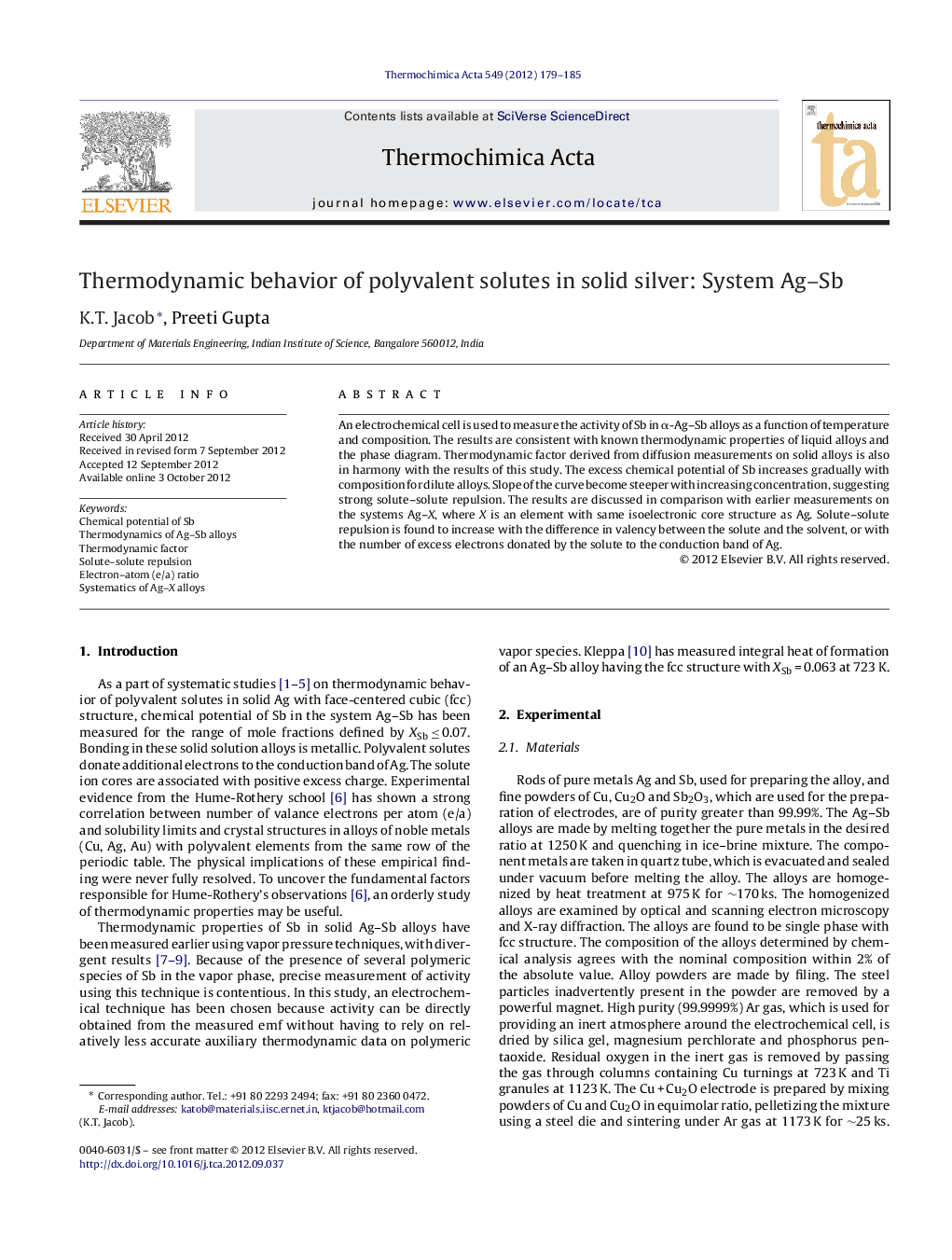| Article ID | Journal | Published Year | Pages | File Type |
|---|---|---|---|---|
| 673991 | Thermochimica Acta | 2012 | 7 Pages |
An electrochemical cell is used to measure the activity of Sb in α-Ag–Sb alloys as a function of temperature and composition. The results are consistent with known thermodynamic properties of liquid alloys and the phase diagram. Thermodynamic factor derived from diffusion measurements on solid alloys is also in harmony with the results of this study. The excess chemical potential of Sb increases gradually with composition for dilute alloys. Slope of the curve become steeper with increasing concentration, suggesting strong solute–solute repulsion. The results are discussed in comparison with earlier measurements on the systems Ag–X, where X is an element with same isoelectronic core structure as Ag. Solute–solute repulsion is found to increase with the difference in valency between the solute and the solvent, or with the number of excess electrons donated by the solute to the conduction band of Ag.
► Chemical potential of Sb in solid Ag–Sb alloys with fcc structure has been measured. ► Results are consistent with phase diagram and thermodynamic data for liquid alloys. ► Solute–solute repulsion energy is evaluated from the results. ► Systematics of solute–solute repulsion in Ag-rich alloys is unraveled.
